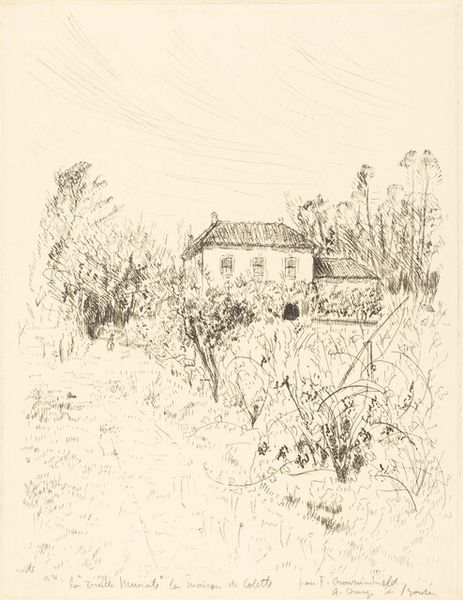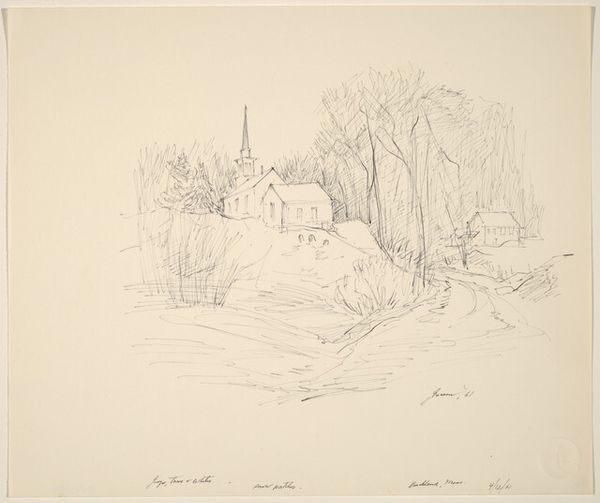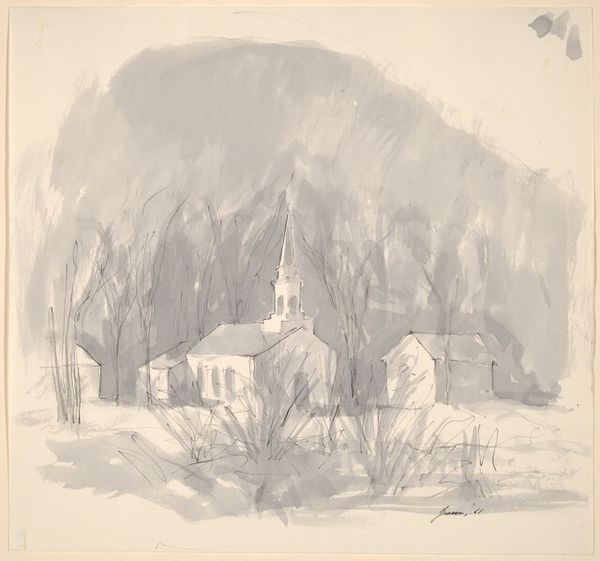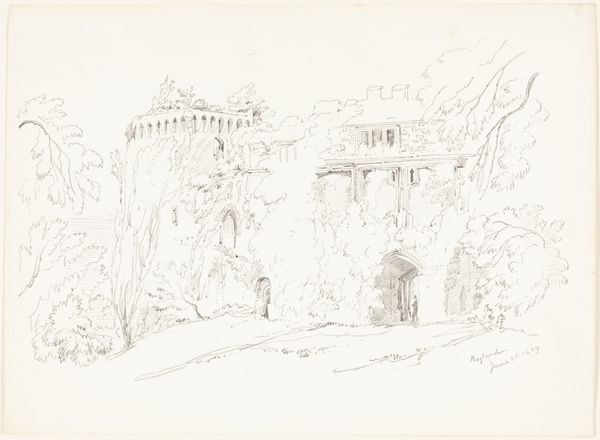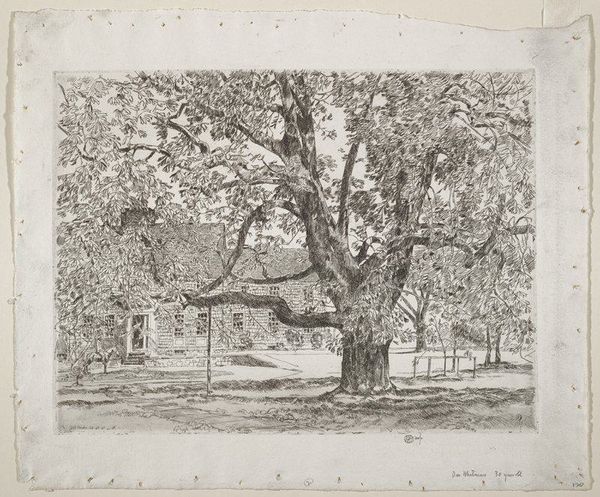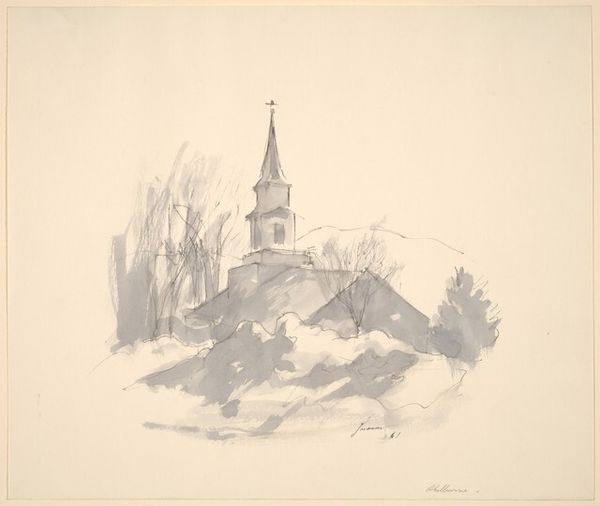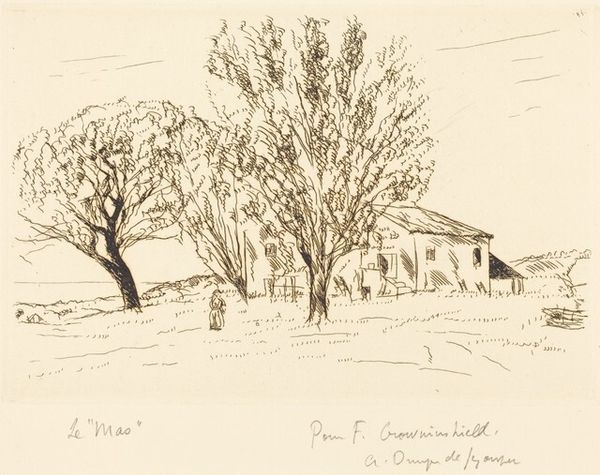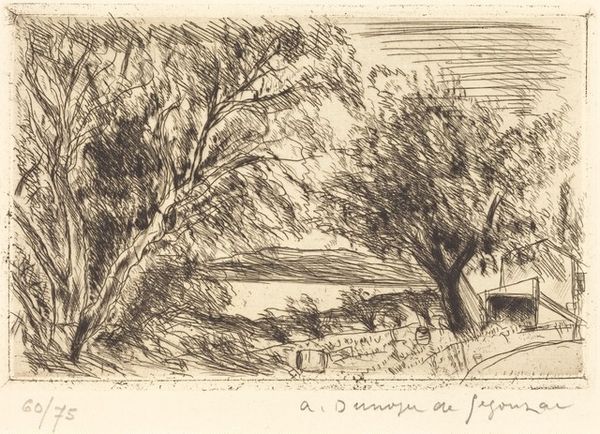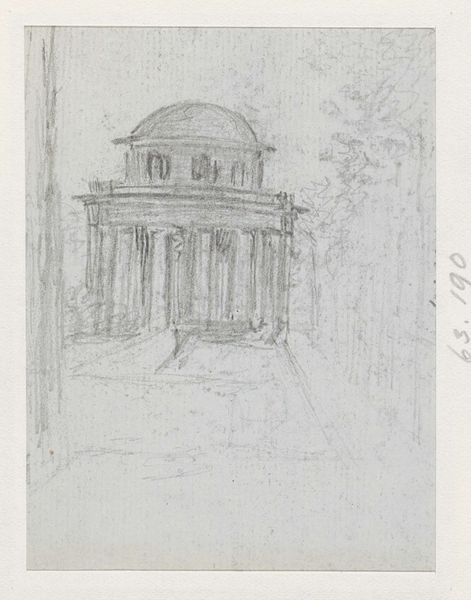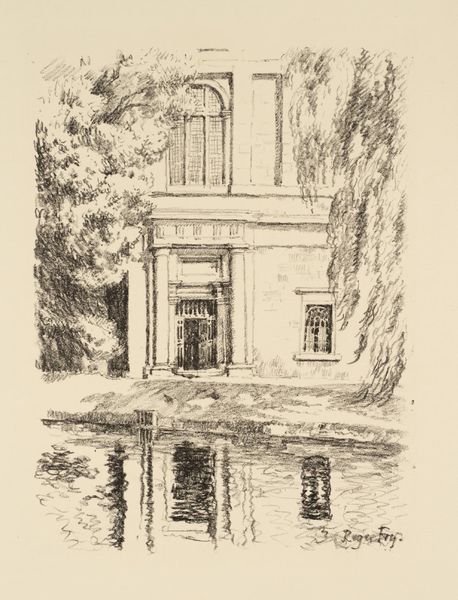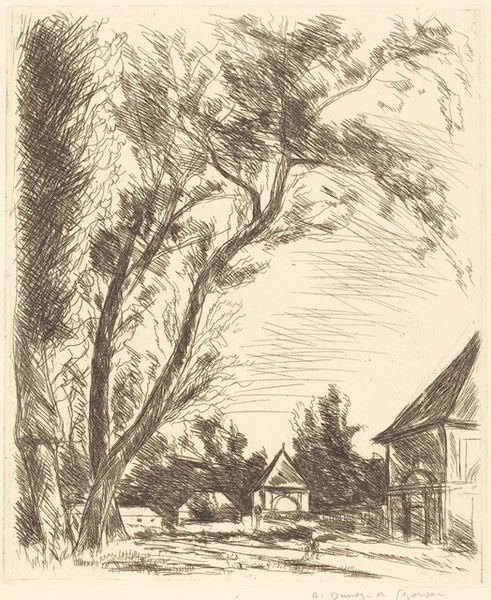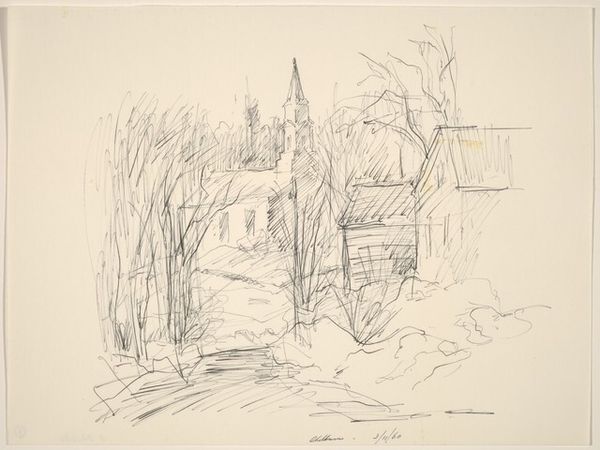
drawing, print, etching, ink, architecture
#
drawing
# print
#
etching
#
landscape
#
etching
#
ink
#
architecture
Copyright: National Gallery of Art: CC0 1.0
Editor: This is André Dunoyer de Segonzac's "La treille muscate, de profil," from 1932. It appears to be an etching. There’s a house mostly hidden behind trees and bushes; it feels a bit like peeking at something private. What stands out to you when you look at it? Curator: The immediate element demanding attention is the deployment of line. Consider the density and frenetic energy with which the artist renders the foliage, juxtaposed against the relative simplicity of the architectural structure. Note how the architectural lines create structure and geometry in counterpoint to the free form chaotic linework representing organic nature. Editor: So, the contrast between the wild foliage and the orderly house? Curator: Precisely. The house, although partially obscured, provides a grounding visual stability, while the treille threatens to overwhelm it. Consider also the use of positive and negative space. The artist masterfully balances the density of the etched lines with the bare paper, creating a sense of depth and atmosphere. Editor: It's almost like the house is being consumed. Curator: Perhaps. Or consider it the enduring order asserting itself amidst the chaos of nature. Do the light and shadow created with ink weight direct your eye in a particular direction? Editor: I see. The heavy foliage on either side draws the eye into the house at the center. That tension is compelling. Thank you, this was insightful. Curator: The formal elements underscore how even simple etching creates significant artistic expression.
Comments
No comments
Be the first to comment and join the conversation on the ultimate creative platform.
